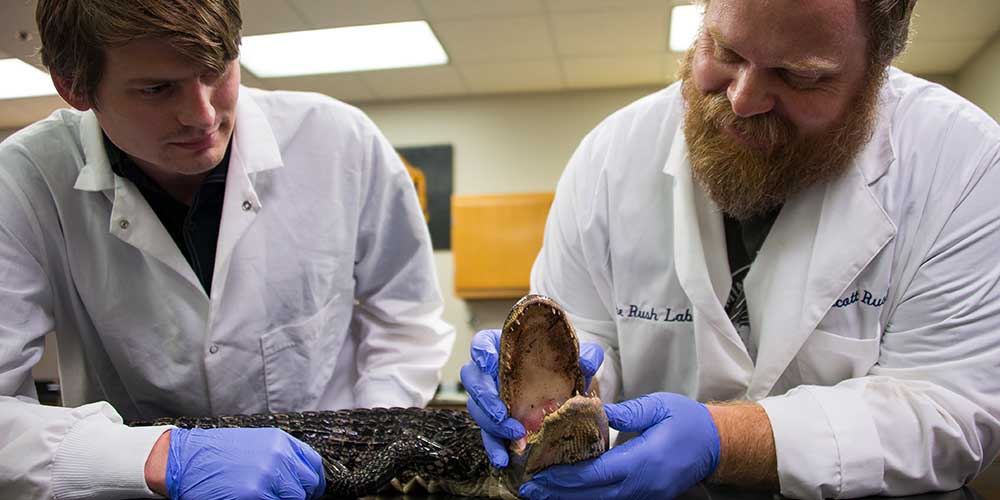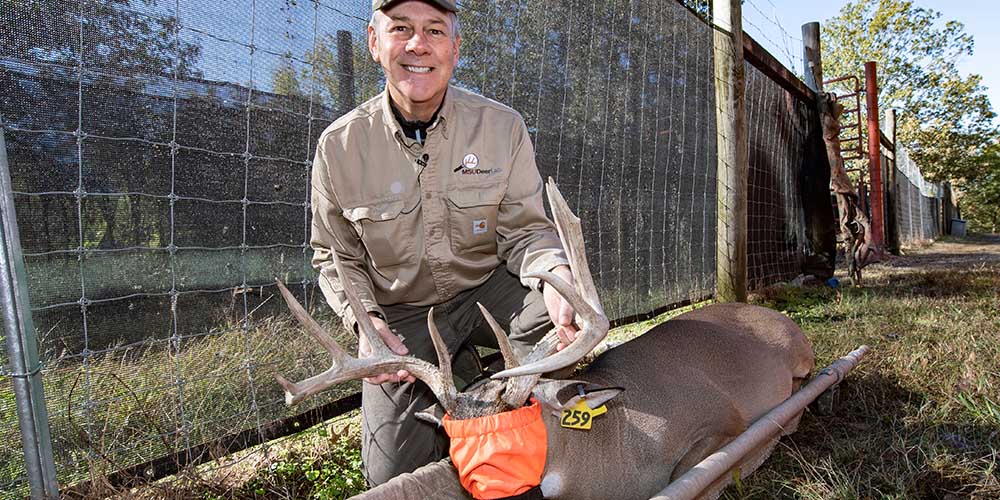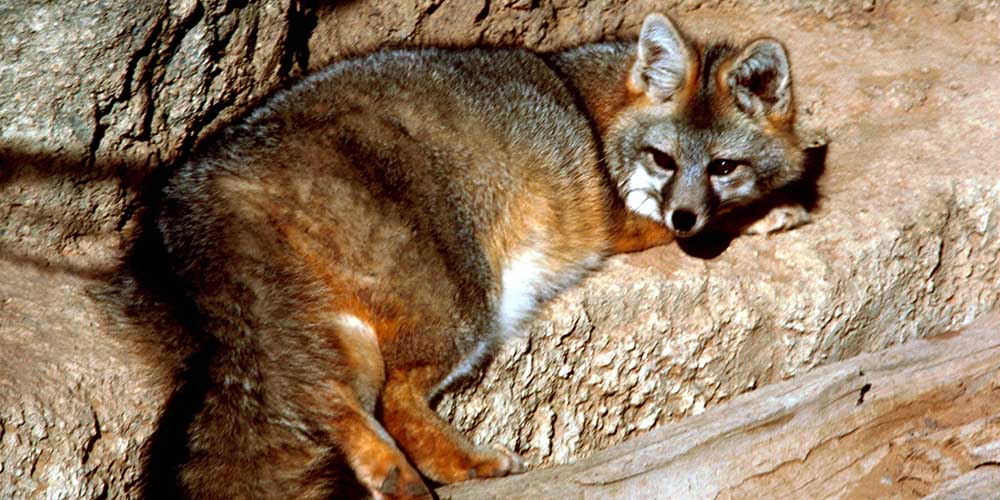Related Stories
Wildlife Stories

Hotel Parasite
Alligators have occupied the earth for millions of years, yet their role as host to parasitic creatures is still somewhat a mystery. Dr. Scott Rush, FWRC associate professor in wildlife, fisheries and aquaculture, led a study of the relationship between the American alligator and the trematode known as O. incommodum. Rush collaborated with an undergraduate assistant and colleagues from the MSU College of Veterinary Medicine and Nicholls State University. They found that the microscopic worm-like parasites begin their journey emerging from a snail and traveling through water to find a host to accommodate their eventual growth.
They make their next temporary home in the ovaries of gar, which are then consumed by alligators. Instead of entering the digestive system, the trematodes swim up the esophagus and set up permanent residence on the alligator’s tongue. The average alligator carries five trematodes on its tongue, with no apparent adverse effects. Rush and his team are using DNA sequencing to identify other species of parasites present in both gar and alligators. They believe that this research will provide insight into how parasites fit into the food chain and how those relationships help shape ecosystem structures.
2017

Environmental Sentinels
Mississippi State University researchers, led by Dr. Steve Demarais, are pioneering a new method for detecting Chronic Wasting Disease (CWD) in deer before symptoms appear. The team is investigating the use of deer "scrapes"—areas where bucks leave saliva, urine, and paw marks—as early warning signals for CWD. Scrapes could indicate the presence of prions (infectious agents of CWD) even before a deer shows symptoms. The team has found CWD prions in scrapes up to 19 miles away from known infected deer. This method could offer a more cost-effective and timely approach to monitoring CWD, helping wildlife agencies detect the disease in new areas more efficiently.
Research partners include the University of Minnesota and MSU's Veterinary Research and Diagnostic Lab. Positive results from scrape samples would inform hunters to test harvested deer but would not trigger a CWD Management Zone.
2023

Understanding Ecology of Gray Foxes and Asian Bear Population Estimation
Finding better ways to study foxes and bears in the forest helps animals and humans alike, according to one FWRC population ecologist. Dr. Dana Morin, assistant professor of wildlife ecology and FWRC scientist is motivated to discover the best animal population monitoring methods. Morin contributed to two studies considering how to utilize camera traps to monitor population trends and understand drivers of population change amongst different species. She and her collaborators from the U.S. Forest Service, Southern Illinois University Carbondale, and the Illinois Natural History Survey studied how competition may contribute to population declines in gray foxes. Morin also has evaluated combined methods in her current research to discover what density estimation methods are best suited for monitoring Asian bears.
The team found that unmarked estimation methods were unreliable for low density species, the case for most Asian bear populations, but accuracy and precision improved when camera trap data was used in conjunction with additional sampling methods. In addition, the research concluded that detecting population declines in Asian bears or other low-density populations would require sampling at extensive spatial scales, collaborations, and coordination of study designs and sampling protocols. The gray fox research was funded by Illinois Department of Natural Resources, Federal Aid in Wildlife Restoration Project, USDA Forest Service, Pacific Northwest Research Station, and USDA National Institute of Food and Agriculture McIntire Stennis Program. The Asian bear research was supported by USDA National Institute of Food and Agriculture McIntire Stennis Program with additional funding provided by the Research Council of Norway.